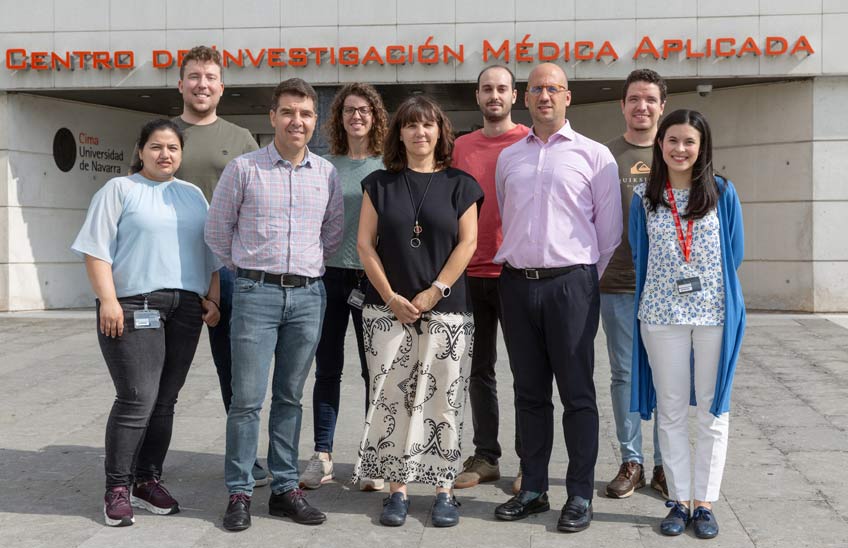New drug combination improves lung cancer treatment in experimental models
The work of the Cima University of Navarra opens a therapeutic avenue for the treatment of tumors with KRAS mutation.

FotoManuel Castells<br>/Shruti Narayaban, Connor Welch, Silve Vicent, Irati Macaya, Inés López, Rodrigo Entrialgo, Mariano Ponz, Julio Jiménez y Gabriela Novoa, equipo del Cima Universidad de Navarra que ha participado en el estudio
11 | 10 | 2023
Researchers at Cima University of Navarra have identified a new drug combination that improves the treatment of experimental models of lung cancer. The study opens a therapeutic avenue for the treatment of patients with this tumor subject .
Lung cancer continues to be the leading cause of cancer death in the world. One of its most frequent variants is adenocarcinoma, which is characterized by mutation of the KRAS oncogene. Conventional therapies usually show a limited antitumor effect due to resistance mechanisms, so it is essential to advance in new treatment strategies based on drug combinations.
"To date, drug combinations based on the inhibition of proteins involved in the development of adenocarcinoma, such as MEK1/2 and KRASG12C, have been described. However, their efficacy is restricted to tumor subgroups with very specific molecular characteristics. The goal of our study is to find combinations that act against the highest percentage of adenocarcinomas," explains Irati Macaya, predoctoral student in the Solid Tumors Program at Cima University of Navarra and first author of this research.
Drug repurposing is an effective strategy to discover new indications for drugs that have already demonstrated safety and leave toxicity. "With this approach, at our group we used computational analysis to retarget the use of drugs already available for clinical use and found that a drug used for the treatment of acute myeloid leukemia (Midostaurin) enhances the efficacy of MEK1/2 and KRASG12C inhibitors. This occurs in the majority of in vitro and in vivo models of adenocarcinoma studied, suggesting a generalized therapeutic effect in this tumor subject ", points out Dr. Silve Vicent, researcher of the Solid Tumors Program at Cima, integrated in the Cancer Center Clínica Universidad de Navarra, and director of the study. The results have been published in the latest issue of the scientific journal Nature Communications.
Application in different types of cancer
In the authors' opinion, this work provides a concepttest to present new combined therapeutic strategies based on drug repositioning as an effective approach to treat both adenocarcinoma patients and patients with other cancerslacking effective treatments.
National groups from the National Cancer Research Center (CNIO) and Hospital 12 de Octubre integrated in the Cancer CIBER (CIBERONC), and from Navarrabiomed, in the framework of the Institute of research Sanitaria de Navarra (IdiSNA), as well as other international groups from Stanford University and the University of California (San Francisco), among others, have collaborated in this study. The work was made possible thanks to funding from the Ministry of Science and Innovation, the association Española contra el Cáncer, the María Eugenia Burgos de la Iglesia family and the Alberto Palatchi Foundation, among other public and private institutions.
